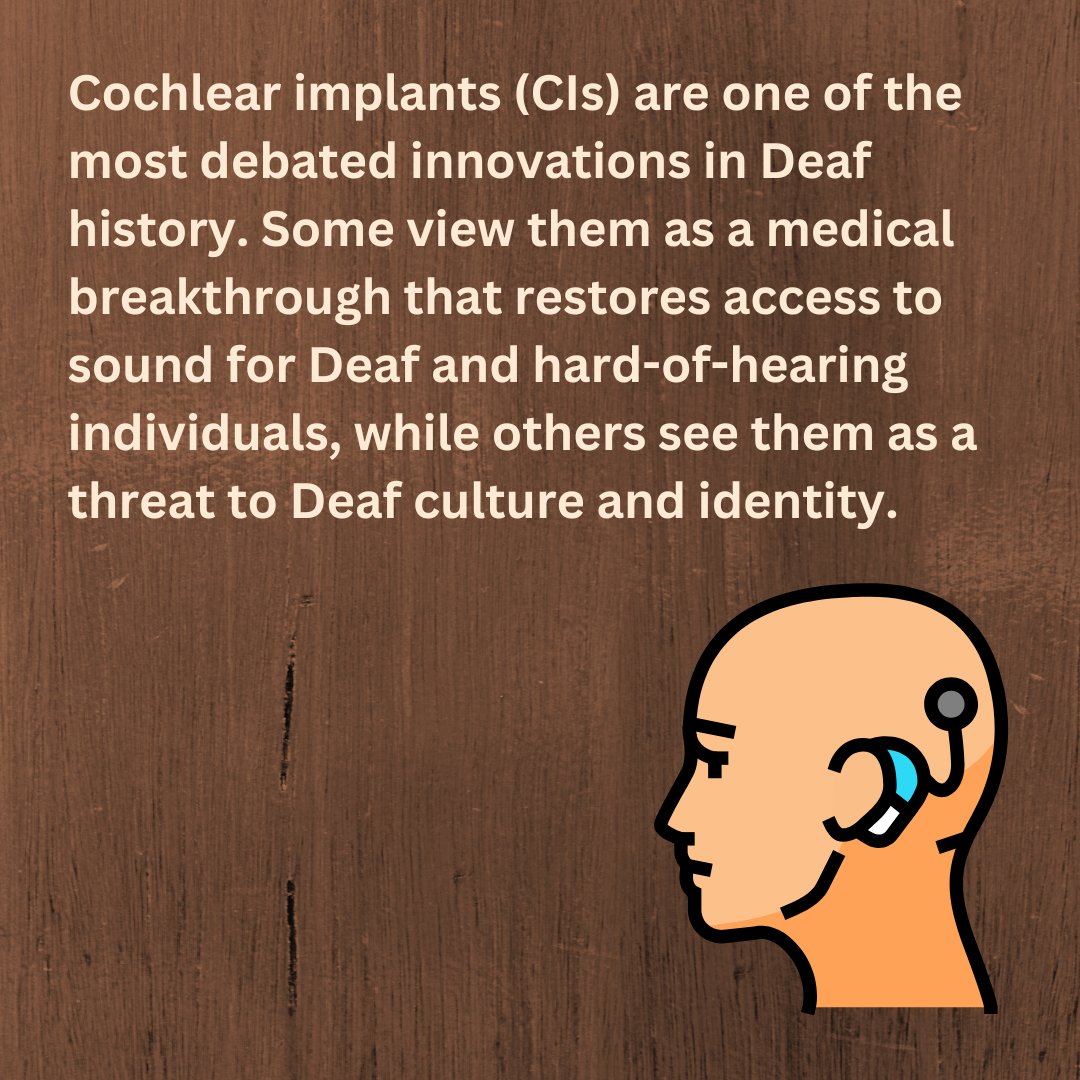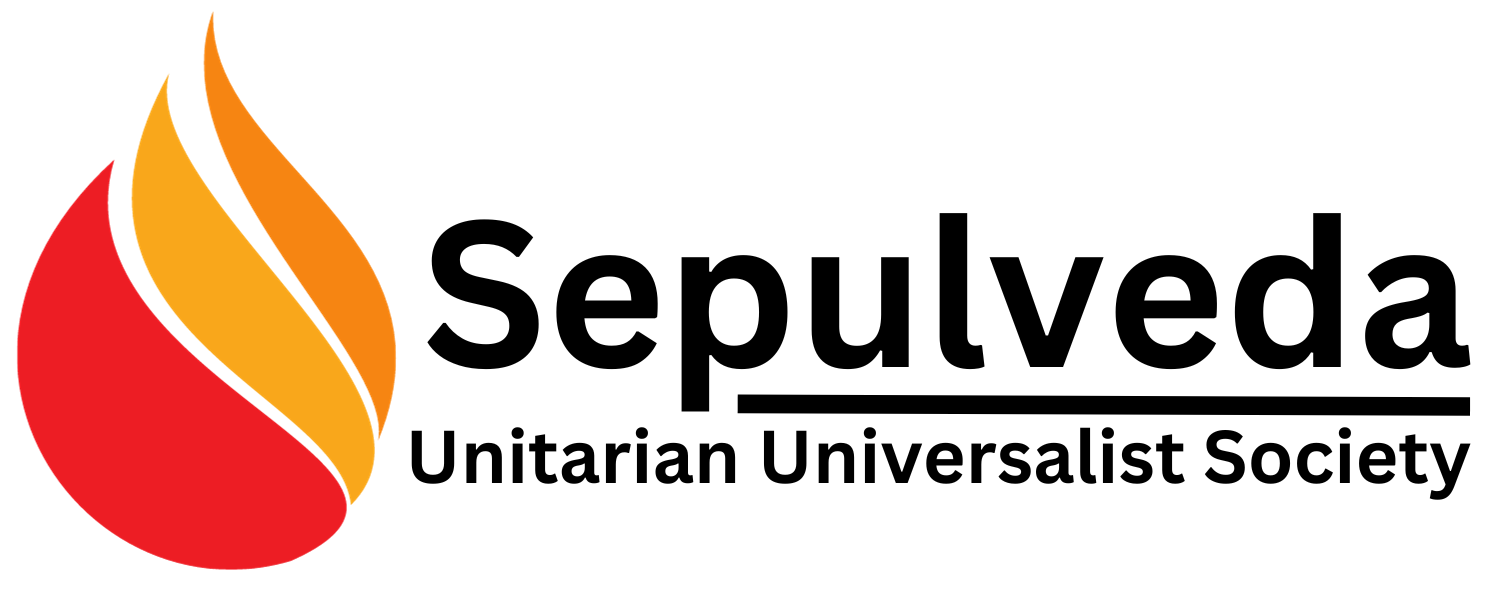Day 7. From Silence to Sound The Cochlear Implant Debate.

Exploring the Technological and Cultural Impact of Cochlear Implants
“Deafness is not a defect to be fixed—it is a culture to be embraced.” – Unknown
Cochlear implants (CIs) are one of the most debated innovations in Deaf history. Some view them as a medical breakthrough that restores access to sound for Deaf and hard-of-hearing individuals, while others see them as a threat to Deaf culture and identity.
Today, we explore the complex and deeply personal discussions around cochlear implants, shedding light on the medical, ethical, and cultural implications of this technology.
What Are Cochlear Implants?
Unlike hearing aids, which amplify sound, cochlear implants bypass damaged parts of the ear and stimulate the auditory nerve directly. This allows some Deaf and hard-of-hearing individuals to perceive sound—but the experience is not the same as natural hearing.
👂 Hearing Aids: Amplify existing sounds for people with residual hearing
🔊 Cochlear Implants: Convert sound into electrical signals that stimulate the auditory nerve
For some individuals who receive cochlear implants, especially those implanted at a young age, the technology can help develop spoken language skills. But for many in the Deaf community, sign language is their natural language, and Deafness is not something that needs to be “fixed.”
The Cultural Debate: Diverse Perspectives
The conversation around cochlear implants is deeply nuanced and personal. Here’s how different perspectives shape the debate:
The Medical View: A Tool for Accessibility
Many audiologists, doctors, and hearing parents of Deaf children see cochlear implants as a life-changing innovation. They argue that CIs:
✔️ Provide access to spoken language, especially when implanted early
✔️ Allow individuals to navigate hearing-dominant spaces more easily
✔️ Offer an option for those who prefer to engage with the hearing world
“For many families, cochlear implants open doors to more communication opportunities, giving children access to spoken language in addition to sign language.” – Dr. Jane Madell, Pediatric Audiologist
The Deaf Community View: A Threat to Deaf Identity
For many in the Deaf community, Deafness is not a disability—it’s a rich cultural identity with its own language (ASL), traditions, and history. They argue that cochlear implants:
❌ Promote the idea that Deafness is a problem to be “fixed.”
❌ May pressure Deaf individuals (especially children) to assimilate into hearing culture.
❌ Can create a divide between Deaf people who sign and those who rely on implants.
“The goal should not be to force Deaf people to hear, but to create a world where Deaf people are valued as they are.” – Nyle DiMarco, Deaf activist
The Bilingual-Bicultural Approach: Embracing Both Worlds
Many Deaf educators and advocates push for a balanced approach that values both sign language and assistive technology. This approach ensures that Deaf children have access to ASL and Deaf culture, regardless of whether they have cochlear implants.
✔️ Prioritizes sign language acquisition for natural language development.
✔️ Allows individuals to navigate both the Deaf and hearing worlds.
✔️ Recognizes that cochlear implants are a personal choice and not a one-size-fits-all solution.
“A cochlear implant does not make someone hearing—it is just a tool. Deaf culture and ASL remain vital, whether someone chooses to use an implant or not.” – Dr. Joseph Hill, Deaf linguist
The Impact on Deaf Children and Families
Many families face difficult decisions when choosing cochlear implants for their child. Some key concerns include:
🔹 Language development: Without early ASL exposure, children may struggle with language delays if the implant does not work as expected
🔹 Community connection: Some Deaf individuals with implants feel isolated from both the Deaf and hearing communities
🔹 Surgical risks: Cochlear implant surgery is invasive and does not guarantee success
💡 Research shows that Deaf children thrive best when they have access to both ASL and spoken language, regardless of whether they use a cochlear implant.
Want to Learn More? Resources to Explore
📘 Book: A Deaf Child Listened: Thomas’ Cochlear Implant Journey, a family’s experience navigating the cochlear implant process.
📺 Documentary: Sound and Fury (2000), a powerful film exploring a family’s debate over cochlear implants.
📜 National Association of the Deaf’s Cochlear Implant Position Statement. Read about the Deaf community’s stance on cochlear implants.
Reflection
The cochlear implant debate is not about whether technology is good or bad—it’s about choice, respect, and cultural identity. Every Deaf person’s journey is unique, and the key to accessibility is ensuring that Deaf individuals have the right to decide what works best for them.
💬 What are your thoughts on the cochlear implant debate?
💬 How can we support and validate the choices and identities of the Deaf and hard of hearing community members we know?
Tomorrow we’ll learn about internet pioneer, Vint Cerf.
Learn more: Get an overview of how cochlear implants work and their purpose and benefits.
#UU #UUA #CelebrateDiversity #DeafCulture #DeafHistoryMonth #DisabilityAwareness #CochlearImplantDebate #SignLanguageMatters #BilingualBicultural
Discover more from SepulvedaUU
Subscribe to get the latest posts sent to your email.
